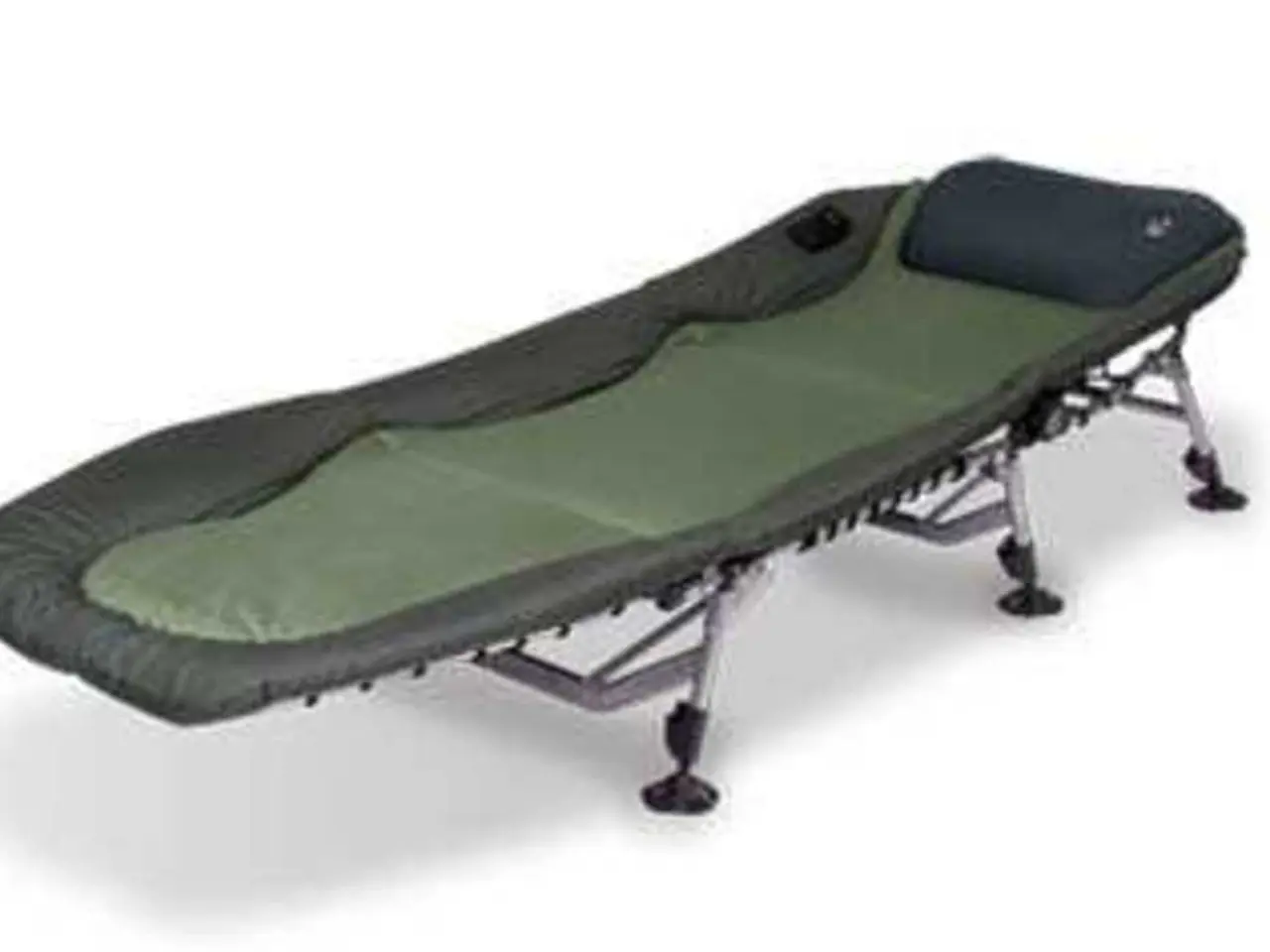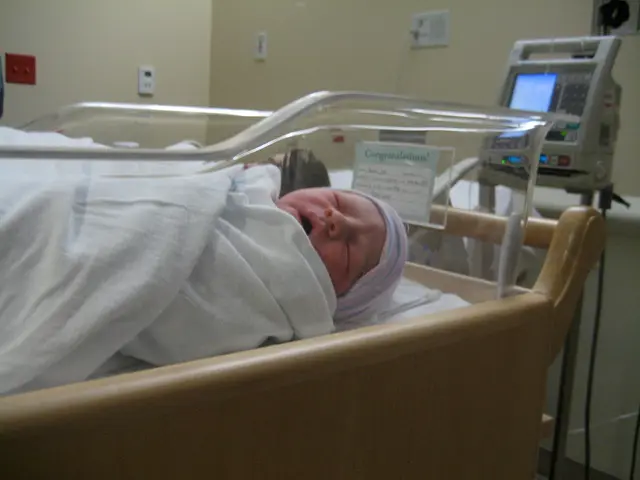Knee stiffness: Origins, remedies, and exercise routines
In this article, we delve into the various causes and effective treatments for knee stiffness, focusing on both injuries and arthritis.
If a minor knee injury is the culprit, home treatments such as resting the knee, applying an ice pack, taking over-the-counter nonsteroidal anti-inflammatory drugs (NSAIDs), and wearing a knee brace can help alleviate pain and stiffness while the injury heals. For more persistent issues, it's crucial to consult a healthcare professional.
Rheumatoid arthritis, an autoimmune condition, attacks the body's own tissues, causing swelling of the synovial membrane in the knees, leading to stiffness and pain. On the other hand, Post-Traumatic Arthritis (PTA) occurs years after a knee injury, resulting in swelling, knee pain, weakness, and worsening symptoms following physical activity or during wet weather.
A torn meniscus, a C-shaped piece of cartilage inside the knee joint acting as a shock absorber, can be caused by sudden movement or twisting of the knee, often during sports or physical activity. Symptoms include pain, swelling, locking of the knee, loss of full range of motion, and a feeling that the knee is giving out.
Arthrofibrosis, or stiff knee syndrome, occurs when an excessive amount of scar tissue forms around the knee joint, often following knee surgeries. Symptoms include knee pain that worsens, swelling and warmth around the knee, and walking with a bent knee.
Effective treatments and home remedies for knee stiffness focus on reducing pain, easing stiffness, and improving joint function. Key approaches include:
1. Knee Braces and Supports: Using knee braces, especially "unloader" braces that relieve pressure on the affected side of the knee, can significantly reduce pain and stiffness. Elastic bandages or knee sleeves can also help compress and stabilise the knee.
2. Physical Therapy and Exercise: Gentle, targeted exercises strengthen the muscles around the knee, increasing stability and reducing stiffness. Examples include straight-leg raises, quadriceps sets, stretching, walking, biking, and swimming. Hydrotherapy or water exercises provide low-impact movement that relieves pain and stiffness while improving joint flexibility.
3. Heat and Cold Therapy: Applying ice packs for 15 to 20 minutes several times a day helps reduce swelling and numbs pain, especially soon after injury or flare-ups. Heat therapy, such as warm towels or heating pads, relaxes muscles and improves circulation, effectively reducing morning stiffness or tightness after inactivity. Alternating hot and cold therapy can be particularly effective for managing arthritis symptoms.
4. Rest and Elevation: Resting the knee and avoiding activities that put excess weight or strain on it allows irritated tissues to heal. Elevating the leg above heart level during rest helps drain fluid and reduce swelling.
5. Weight Management: Losing excess weight can significantly lessen the load on the knee joint, decreasing pain and improving function in osteoarthritis patients.
6. Over-the-Counter Medications and Topical Treatments: NSAIDs like ibuprofen or naproxen can reduce inflammation and pain but should be used under medical supervision, especially for prolonged use. Topical creams containing anti-inflammatory or soothing ingredients may also help alleviate mild to moderate arthritis pain.
7. Alternative and Rehabilitation Therapies: Acupuncture and supplements like glucosamine and chondroitin might offer some relief for arthritis symptoms. Rehabilitation therapies, including physical and occupational therapy, support improved joint function and pain management.
Injuries such as meniscal and ligament tears can increase the likelihood of PTA in the knee. To prevent or alleviate knee stiffness and pain, tips include avoiding stretching until sufficiently warmed up, stretching the legs before and after exercise, stretching slowly and not to the point of pain, using proper form when exercising, making sure that the leg muscles are balanced in strength, and avoiding exercises that make the symptoms worse.
For more severe injuries and knee stiffness that is severe or persistent, a person may need to see their doctor for appropriate treatments, which may include prescription pain medications, corticosteroids, rheumatoid arthritis medications, surgery, physical therapy, and exercises.
Sources: [1] Mayo Clinic. (2021). Knee pain: Symptoms and causes. https://www.mayoclinic.org/diseases-conditions/knee-pain/symptoms-causes/syc-20376282
[2] American Academy of Orthopaedic Surgeons. (2021). Knee pain. https://orthoinfo.aaos.org/en/diseases--conditions/knee-pain
[3] Arthritis Foundation. (2021). Knee pain. https://www.arthritis.org/diseases/knee-osteoarthritis
[4] Cleveland Clinic. (2021). Knee pain: Diagnosis and treatment. https://my.clevelandclinic.org/health/diseases/16909-knee-pain-diagnosis-and-treatment
- Ulcerative knee stiffness may indicate an autoimmune disorder like Rheumatoid Arthritis, which attacks the synovial membrane in the knees.
- HIV doesn't directly cause knee stiffness, but it weakens the immune system, making people with HIV more susceptible to various infections, including those affecting the joints.
- AQ studies might help in predicting the progression of knee stiffness due to ovactional arthritis, helping devise effective therapies and treatments.
- Obesity increases the likelihood of developing knee stiffness, as excess weight puts additional strain on the knee joint.
- Lung conditions such as COPD can lead to respiratory problems that may indirectly contribute to knee stiffness due to decreased mobility and reduced physical activity.
- There are different types of knee stiffness, with one category classified as type-2 diabetes-related knee stiffness, which may be more severe and resistant to traditional treatments.
- Retargeting advertising can be used to reach people suffering from knee stiffness, diabetes, or other chronic diseases, offering information about workplace-wellness programs and medical-conditions-focused fitness-and-exercise programs.
- Cancer patients often experience knee stiffness as a side effect of chemotherapy or radiation therapy, or due to the spread of the cancer to the knee joint.
- Diabetes, especially type-2 diabetes, can lead to digestive-health complications like colitis, which may indirectly cause knee stiffness.
- In the context of chronic diseases like knee stiffness, having access to contextual and predictive science can help identify the underlying causes more accurately and guide personalized therapies and treatments.
- Science has made significant strides in developing therapies and treatments for various medical conditions, including knee stiffness, like Paxlovid, which targets specific aspects of the virus to improve symptoms.
- Workplace-wellness programs can help address the root causes of conditions like knee stiffness, diabetes, and obesity, offering education, screenings, and resources for health-and-wellness improvement.
- Chronic diseases like knee stiffness, Alzheimer's, depression, and chronic kidney disease often share common risk factors, such as inflammation, age, and lifestyle choices.
- CBD oil, derived from the cannabis plant, is being studied as a potential treatment for chronic pain related to conditions like arthritis and knee stiffness.
- Skin-care regimens can play a role in overall health and wellness, as poor skin care can lead to skin conditions that might exacerbate symptoms of depression or other mental-health issues.
- Arthritis medications, including corticosteroids, can help reduce inflammation and alleviate pain associated with conditions like rheumatoid arthritis and chronic-kidney-disease-related joint pain.
- Diet and nutrition are crucial in managing conditions like diabetes, obesity, and arthritis, as maintaining a balanced diet rich in weight-management friendly foods helps manage symptoms and prevent further complications.
- Cardiovascular health plays a role in knee stiffness, as maintaining a healthy heart can help alleviate the strain on the joints and reduce the risk of developing conditions like COPD, which can indirectly contribute to knee stiffness.
- Medicare covers a range of treatments for knee stiffness, including prescription medications, surgery, physical therapy, and home health care services.
- Therapies and treatments for skin conditions like psoriasis, eczema, or rosacea can help improve overall health and wellness, as these conditions may indirectly affect other aspects of health, such as mental health or hearing.
- Sports-related injuries, including knee injuries, can be managed effectively through a combination of rest, exercise, and physical therapy, helping athletes return to their preferred activities and maintain their hearing, eye-health, and hearing.




